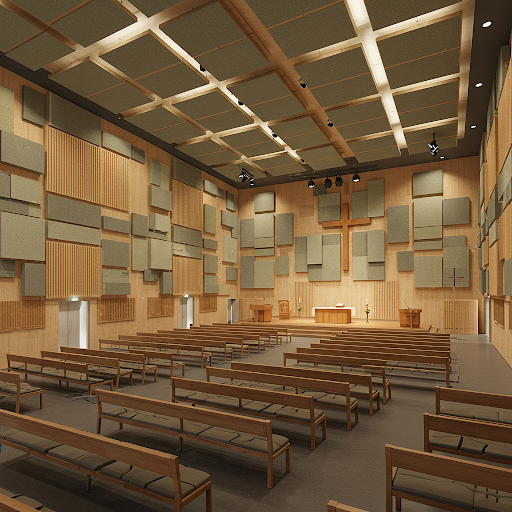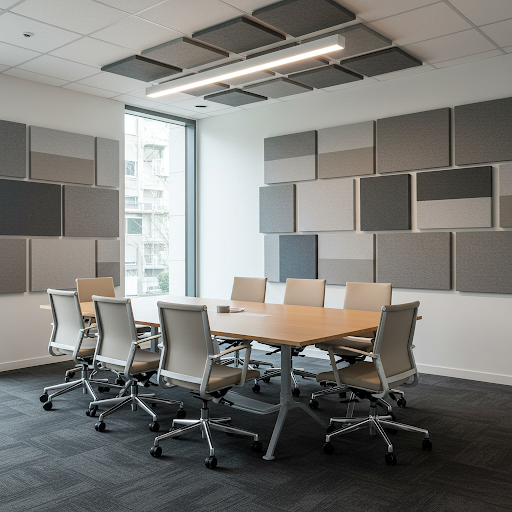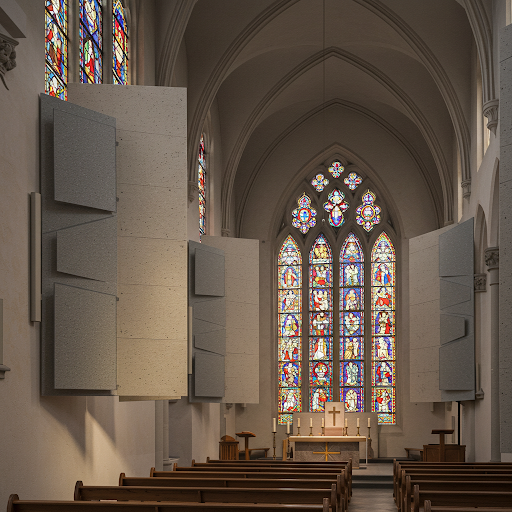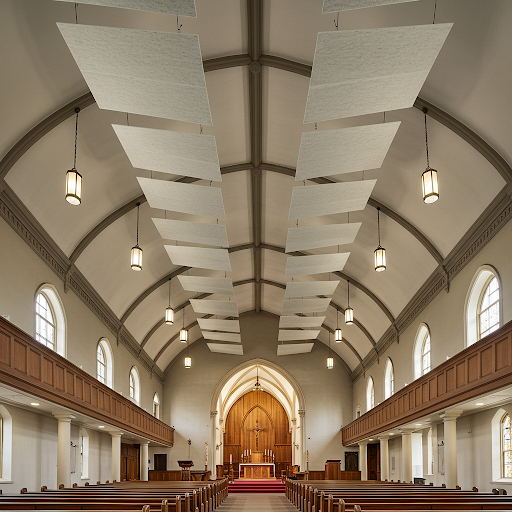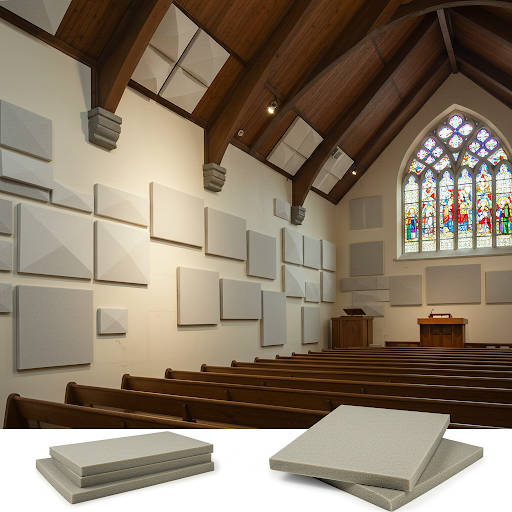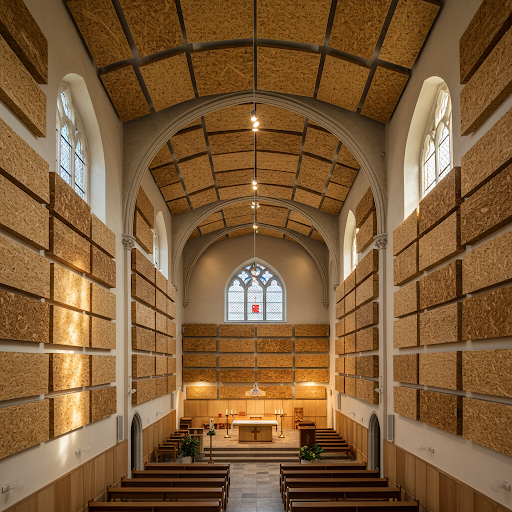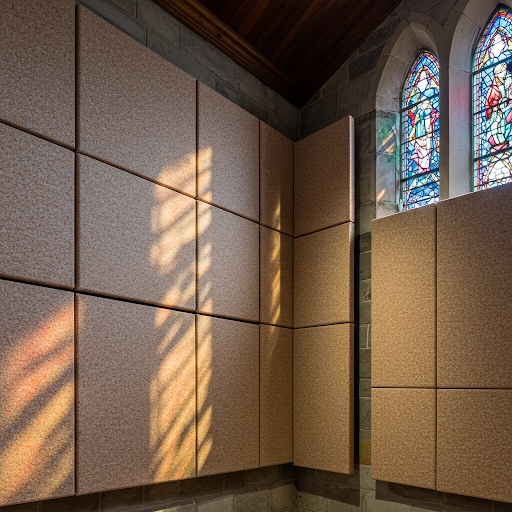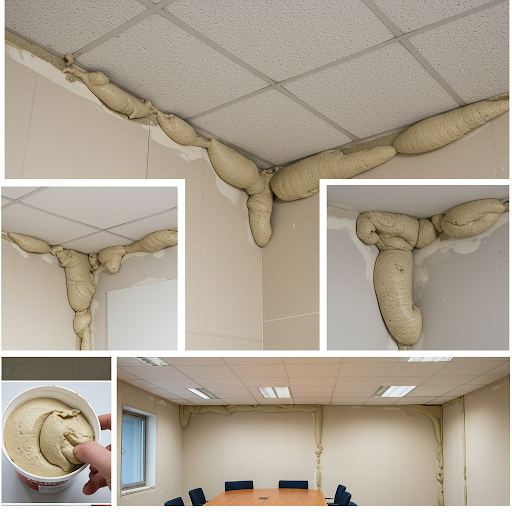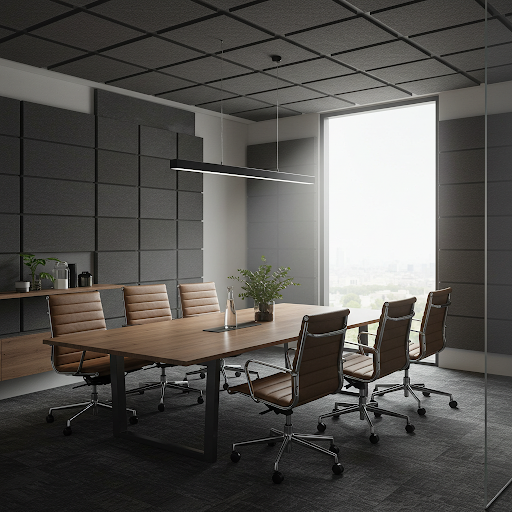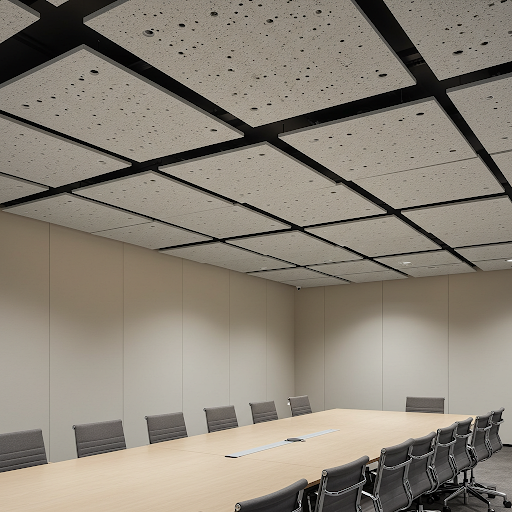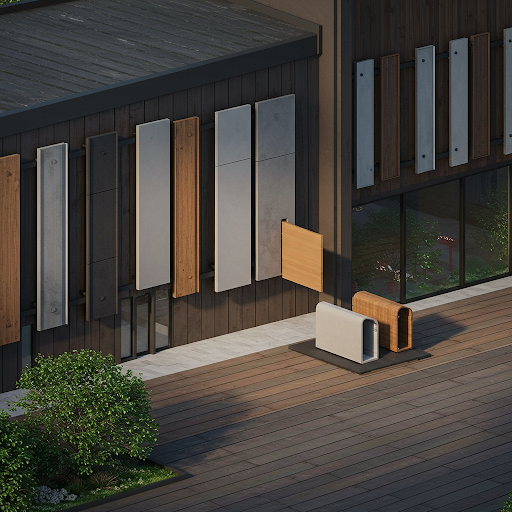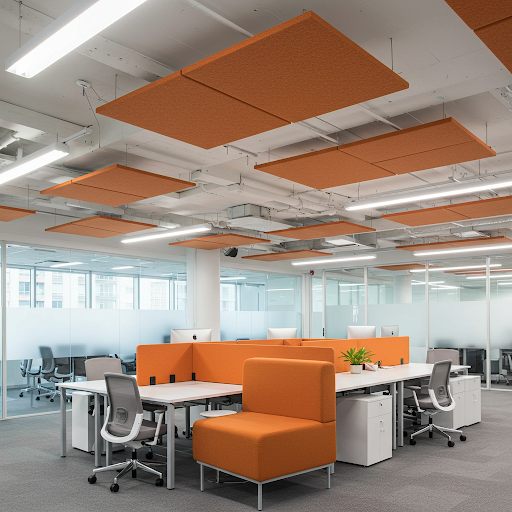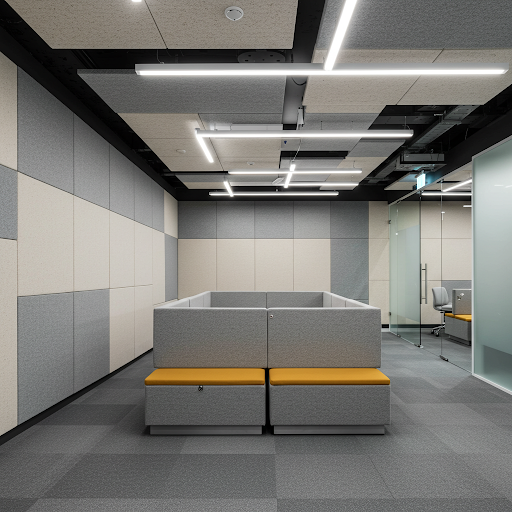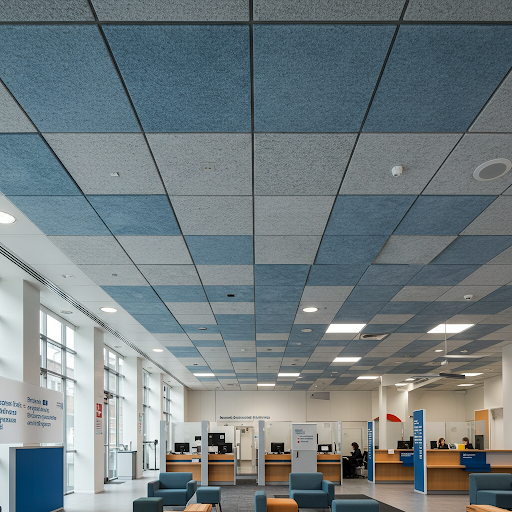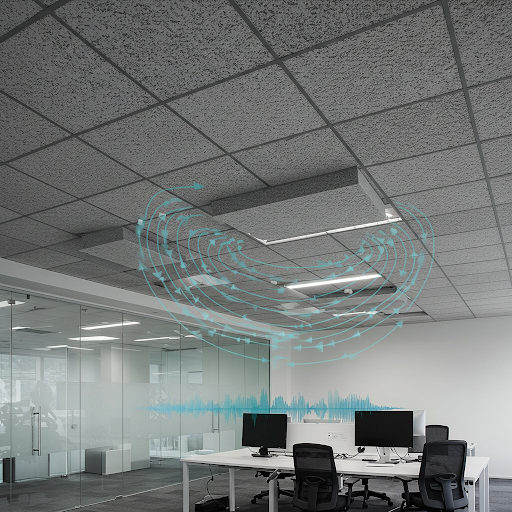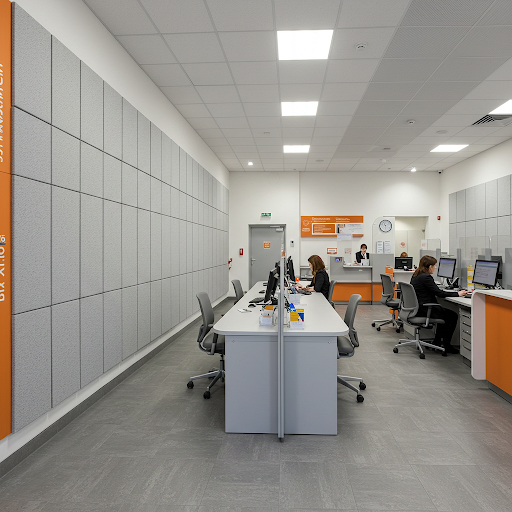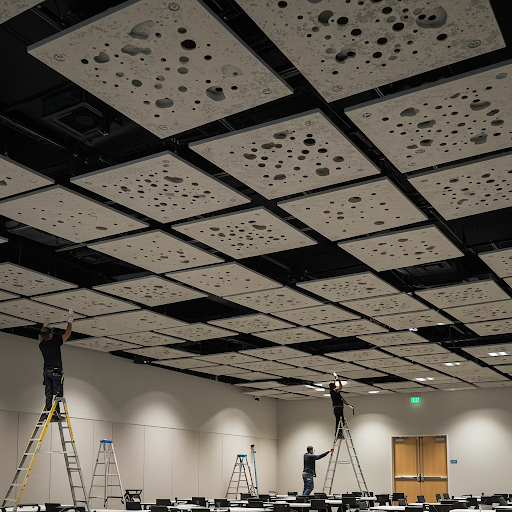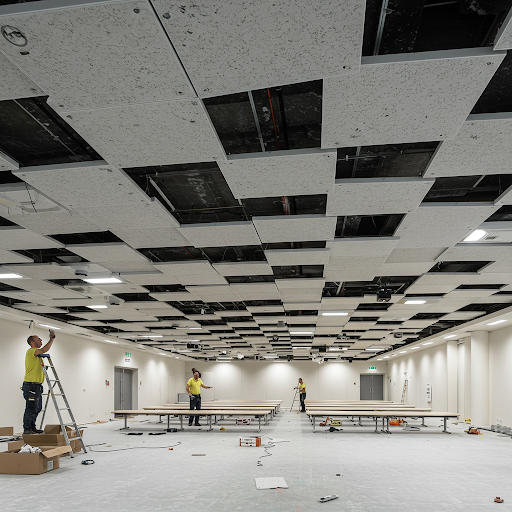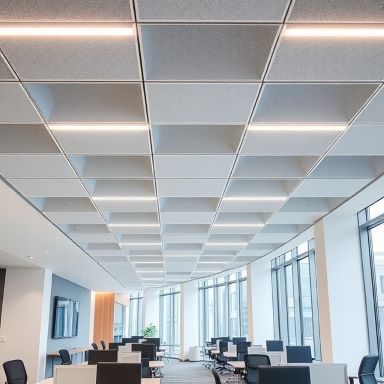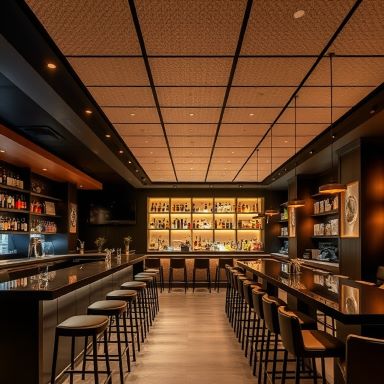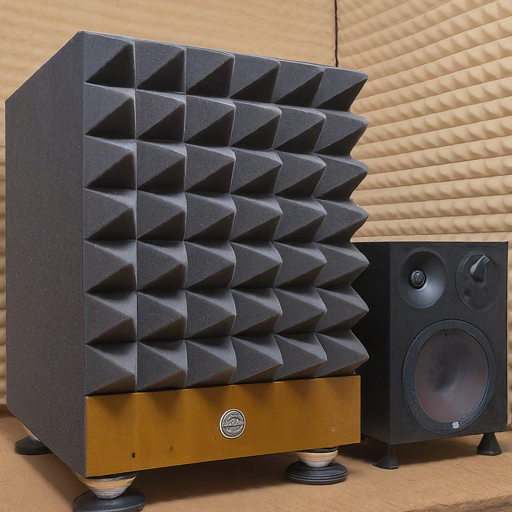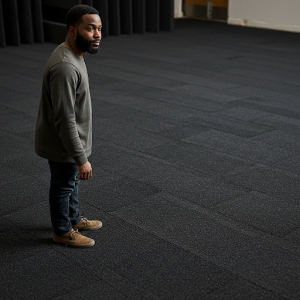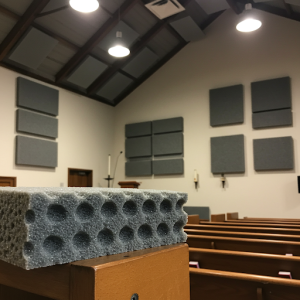Description
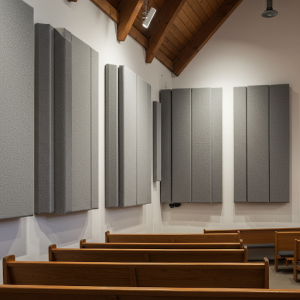
Church acoustic treatment focuses on reducing excessive reverberation and uncontrolled sound reflections in churches can lead to elevated sound pressure levels, posing a potential risk to attendees’ hearing, especially during loud musical performances or sermons. Acoustic treatment plays a crucial role in mitigating this risk. By strategically absorbing and diffusing sound waves, these treatments effectively reduce the overall sound pressure levels within the church.
For clear speech and music, solutions include installing sound-absorbing panels on walls and ceilings, using fabric drapes, and optimizing speaker placement. Balancing absorption with the space’s architecture is key to achieving optimal sound quality.
It is not enough to have the right acoustic panels for church soundproofing. How you apply them is equally, if not more important. While high-quality panels are essential, their impact hinges on strategic placement and application.
Acoustic panels, regardless of their superior absorption coefficients, will perform suboptimally if haphazardly distributed. Incorrect placement can lead to uneven sound absorption, creating dead spots or over-damped areas, compromising clarity. For example, placing panels solely on the back wall might address echoes but neglect reflections from side walls or the ceiling.
Effective application necessitates a thorough acoustic analysis, identifying primary reflection points and areas of sound concentration. Professional installation ensures proper panel spacing, orientation, and integration with the church’s aesthetic.
Moreover, considering the specific frequency range needing treatment and applying panels accordingly is crucial. The right application transforms mere materials into a finely tuned acoustic environment, dramatically improving speech intelligibility and musical richness.
Engaging an acoustic professional is highly recommended for addressing the unique acoustic challenges within a church. We have the specialized knowledge and tools necessary to:
Conduct thorough assessments
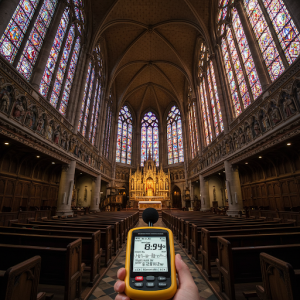
Assessing church acoustic treatment involves evaluating sound clarity, reverberation time, and evenness of sound distribution.
Conduct listening tests from various seating positions, noting speech intelligibility and musical fidelity. Measure reverberation time using acoustic software or a sound level meter. Identify areas with excessive echoes or uneven sound coverage. Analyze the impact of installed panels and speaker placement. Compare before-and-after measurements to quantify improvements. Gather feedback from the congregation to gauge perceived sound quality. A professional acoustic assessment provides objective data and expert recommendations.
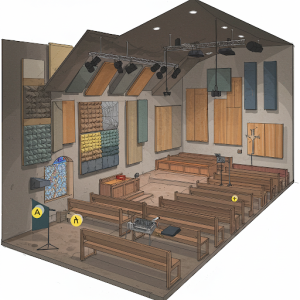
Recommend tailored church acoustic treatment

Following thorough acoustic assessments, we tailor acoustic treatments to harmonize with the church’s architecture and practical requirements.
This involves selecting appropriate panel types, materials, and placement to control reverberation and optimize sound clarity. We consider the church’s aesthetic, ensuring treatments complement its design. Specifications include panel dimensions, absorption coefficients, and installation methods. We prioritize speech intelligibility for sermons and musical richness for performances. Our designs balance sound absorption and diffusion, creating an immersive and comfortable auditory experience for the congregation while respecting the space’s inherent character.
Ensure optimal sound quality
It’s very common to find churches where what the preacher is saying is difficult to hear clearly, resulting in a complete failure of the primary objective, which is to convey a clear and concise message to the audience. This problem is due to various factors involved in the design and construction of the auditorium, the main ones being:
Church Acoustic Treatment Material Selection
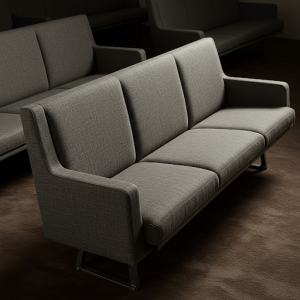
Most churches contain metal structures, sheet metal roofs, tiled walls, flagstone floors, and large glass windows, which are materials with a very low absorption coefficient that favor sound reflection.
Selecting materials for church acoustics requires a delicate balance between sound control and visual harmony. Hard, reflective surfaces like stone or tile can create unwanted reverberation, blurring speech and music. Conversely, excessively absorptive materials can make the space feel acoustically “dead,” lacking warmth and resonance.
Ideal solutions often involve combining materials. For example, strategically placed wood panels can diffuse sound while adding visual richness. Fabric-covered acoustic panels can absorb excess reverberation and be customized to blend with the church’s decor. Carpeting or rugs can dampen floor reflections, and drapery can control window reflections.
The material’s texture, density, and placement all contribute to its acoustic impact. Ultimately, the goal is to create an environment where spoken word is clear, music is vibrant, and the aesthetic enhances the spiritual experience. Careful consideration of material properties and their integration within the church’s design is essential.
Temple Size
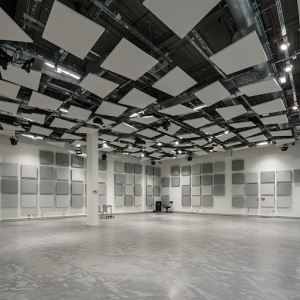
The larger the dimensions (length, width, and height), the longer it will take for the sound to travel to a surface, collide with it, and reflect before disappearing, which results in the sound’s persistence in the environment increasing.
The sheer volume of a church space fundamentally dictates the scope and nature of its acoustic treatment. Larger churches, with their expansive interiors and high ceilings, inherently possess longer reverberation times. This means sound waves linger, creating echoes that can blur spoken words and muddy musical performances. Consequently, these grand structures necessitate more extensive acoustic interventions.
Conversely, smaller churches, with their reduced volume, exhibit shorter reverberation times. While this can enhance speech clarity, it may also result in a lack of warmth and resonance. Particularly for musical elements. Therefore, these spaces require treatments that balance absorption with diffusion, preserving natural ambiance.
Regardless of size, the geometry of the church plays a critical role. Irregular shapes and complex architectural features can create unpredictable sound reflections, demanding careful analysis and tailored solutions. In essence, the size of a church establishes the baseline for acoustic considerations. This influences the selection and placement of materials to achieve optimal sound quality.
Acoustic treatment for different types of church architecture
Acoustic treatment in churches is highly dependent on the architectural style. As each architectural style presents unique challenges and opportunities for sound control. Here’s a breakdown of considerations for common church architectures:
1. Gothic Architecture (High Vaulted Ceilings, Stone Walls)
Gothic architecture, with its soaring vaulted ceilings and expansive stone walls, presents unique acoustic challenges. These architectural features, while visually stunning, create environments prone to excessive reverberation and echoes, significantly impacting speech intelligibility and musical clarity.
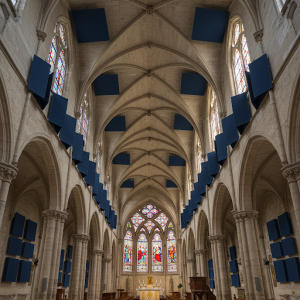
The hard, reflective surfaces cause sound waves to bounce around the space for extended periods, resulting in a blurred and indistinct auditory experience. To mitigate these issues, careful acoustic treatment is essential. This often involves the strategic placement of sound-absorbing materials, such as acoustic panels or fabric-wrapped elements, on walls and within the upper reaches of the church.
Ceiling clouds and baffles can effectively absorb sound in the high vaulted areas, while diffusers help to scatter sound waves, reducing echoes and creating a more even sound distribution. Furthermore, meticulous sound system design and speaker placement are crucial to ensuring that sound reaches all areas of the church with clarity and precision. Balancing the need for acoustic control with the preservation of the church’s architectural integrity requires expertise and sensitivity, ensuring that the space retains its grandeur while providing an optimal auditory environment for worship and musical performance.
2. Romanesque Architecture (Rounded Arches, Thick Walls)
Romanesque architecture, characterized by its rounded arches and robust, thick walls, presents specific acoustic challenges within church interiors. The inherent design, while historically significant, tends to produce prolonged reverberation times, significantly impacting the clarity of spoken words and the distinctness of musical performances. The rounded arches, acting as natural sound reflectors, can concentrate sound waves, leading to uneven sound distribution and the creation of “hot spots” and “dead spots” within the space.
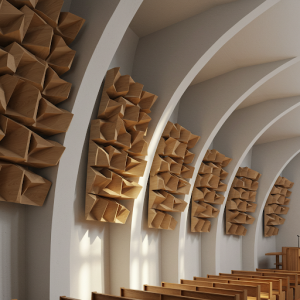
To address these acoustic issues, a balanced approach combining sound absorption and diffusion is necessary. Strategically positioned sound-absorbing materials, such as fabric-wrapped panels or specialized acoustic tiles, can effectively reduce reverberation by minimizing sound reflections off the hard wall and ceiling surfaces.
Diffusers, employed to scatter sound waves, are crucial in mitigating the focusing effect of the rounded arches, ensuring a more uniform sound field. Attention to the aesthetic integration of these treatments is paramount, ensuring they complement the architectural style without compromising the historical integrity of the space. Additionally, careful speaker placement and sound system design are essential for achieving optimal sound distribution, ensuring that every congregant can hear the spoken word and appreciate the musical nuances within the worship service.
3. Modern Architecture Church Acoustic Treatment
Modern church architecture, with its varied materials like glass, concrete, and steel, and open, often minimalist spaces, poses unique acoustic challenges. These materials, while visually appealing, are highly reflective, leading to uncontrolled reverberation and echoes. Open floor plans exacerbate sound leakage and reduce isolation between areas. Achieving clear speech and resonant music requires a careful, integrated approach.
Acoustic treatment in modern churches must prioritize seamless integration with the architectural design. Specialized acoustic materials that complement the aesthetics, such as perforated metal panels or fabric-wrapped elements designed as architectural features, are essential. Sound absorption, using strategically placed panels or ceiling treatments, minimizes reverberation.
Diffusers, integrated into walls or ceilings, scatter sound, creating a more uniform sound field. Soundproofing measures, like double-glazed windows and isolated wall systems, control sound leakage. Electronic acoustic systems, including digital signal processing and advanced speaker systems, allow for fine-tuning the sound to suit the space and event. Close collaboration between architects, acousticians, and sound engineers is vital to achieve optimal sound quality without compromising the modern design vision.
It’s vital to work with experienced acoustic professionals who understand the unique challenges of church acoustics. They can conduct thorough analyses and recommend tailored solutions to enhance the worship experience.
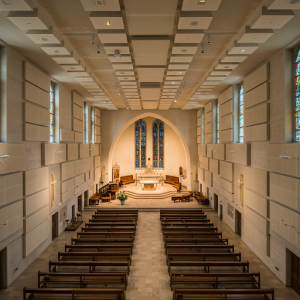 Benefits of church acoustic treatment
Benefits of church acoustic treatment
By improving the acoustics inside the church, we obtain the following advantages:
-
Reduction of reverberation times and increase in intelligibility. Effective church acoustic treatment aims to significantly reduce reverberation times, leading to a noticeable increase in speech and musical intelligibility. Strategic placement of sound-absorbing materials and optimized speaker systems is key to achieving this desired acoustic improvement.
-
Better sound appreciation for the pastor, singers, and musicians. Optimized church acoustics enhance sound appreciation for all. Reduced reverberation and improved clarity allow the pastor’s voice and musical nuances to be heard distinctly, enriching the worship experience for performers and the congregation alike.
-
Reduction of sound pressure within the venue and protection against hearing damage for the audience. Acoustic treatment lowers sound pressure levels within the church, minimizing potential hearing damage for attendees. By controlling reflections and reverberation, it creates a safer and more comfortable listening environment.
-
Excessive reverberation and uncontrolled sound reflections in churches can lead to elevated sound pressure levels, posing a potential risk to attendees’ hearing, especially during loud musical performances or sermons. Acoustic treatment plays a crucial role in mitigating this risk. By strategically absorbing and diffusing sound waves, these treatments effectively reduce the overall sound pressure levels within the church.
-
Reduction of unnecessary expenses on sound equipment, which, without a controlled environment, will not function as desired.
Keep in mind that not all churches have the same problems. So each building must be treated differently according to its needs. If your church has acoustic problems, please contact us, and we’ll be happy to assist you.

